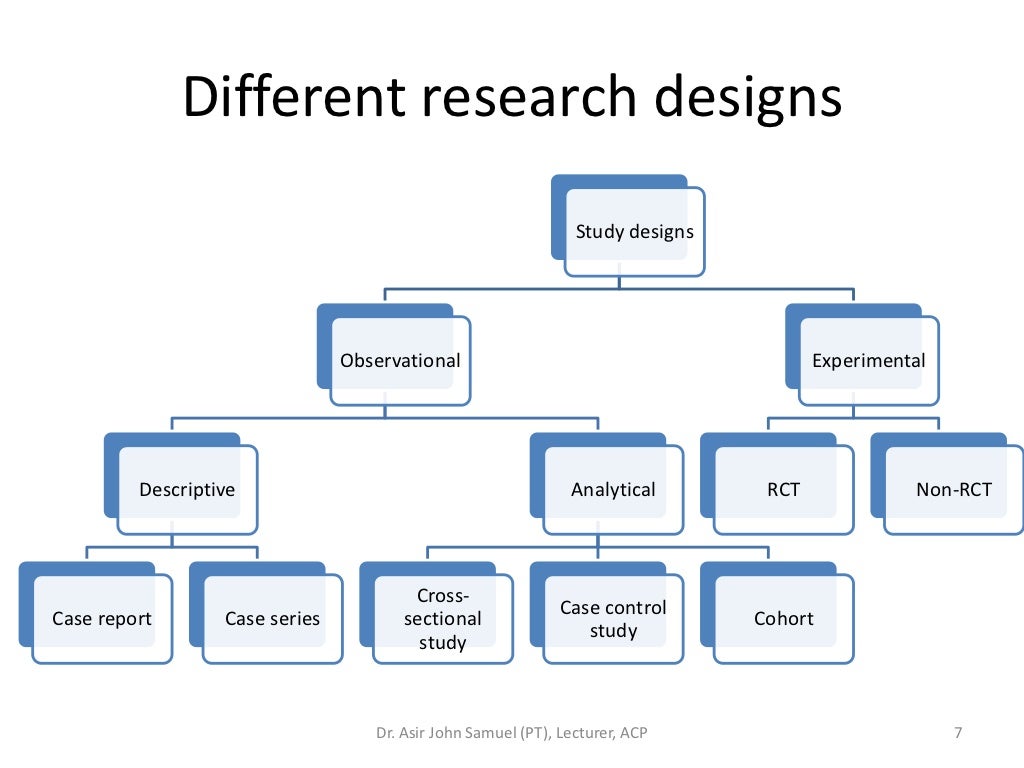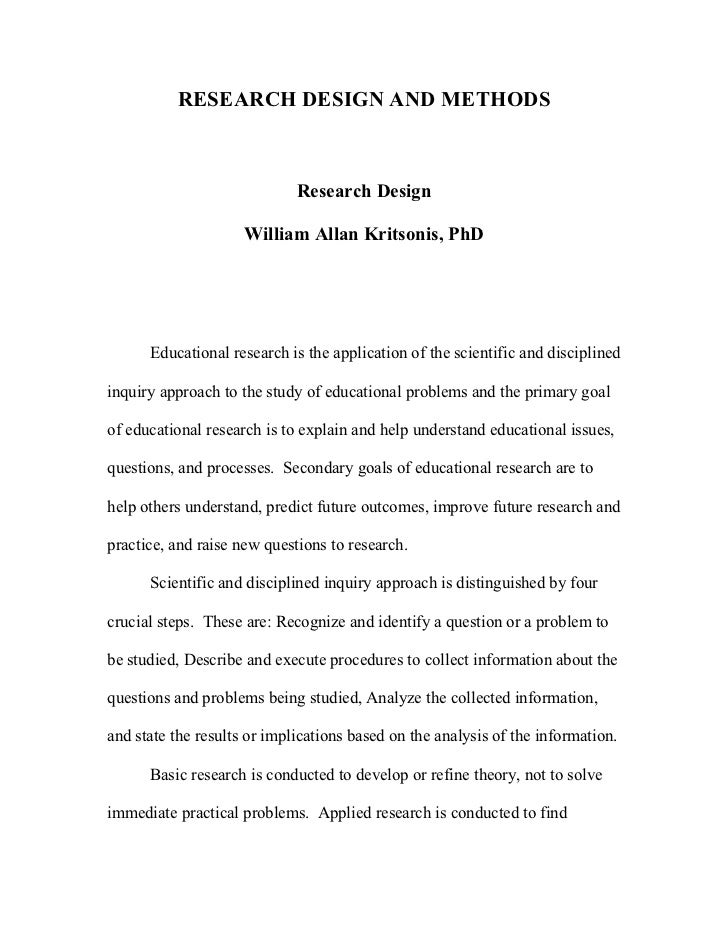Table Of Content

The essentials of action research design follow a characteristic cycle whereby initially an exploratory stance is adopted, where an understanding of a problem is developed and plans are made for some form of interventionary strategy. Then the intervention is carried out [the "action" in action research] during which time, pertinent observations are collected in various forms. The new interventional strategies are carried out, and this cyclic process repeats, continuing until a sufficient understanding of [or a valid implementation solution for] the problem is achieved. The protocol is iterative or cyclical in nature and is intended to foster deeper understanding of a given situation, starting with conceptualizing and particularizing the problem and moving through several interventions and evaluations.
Subject Area
More recently, Gary’s research interests have involved retention and persistence in tertiary education as well as online pedagogy. He has served as author on approximately 70 peer-reviewed publications and collaborated in over 70 conference presentations; several publications and presentations have involved his doctoral students. He is active in the American Public Health Association, serves as a peer reviewer with the Higher Learning Commission regional accreditation body, and serves as a reviewer for several professional journals in education, psychology, and public health. There are large racial inequities in pregnancy and early childhood health within state Medicaid programs in the United States. To date, few Medicaid policy interventions have explicitly focused on improving health in Black populations. Pennsylvania Medicaid has adopted two policy interventions to incentivize racial health equity in managed care (equity payment program) and obstetric service delivery (equity focused obstetric bundle).
Over 1,000 study spaces including rooms for group study and over 500 computers available.
Researchers’ choice of designs are ultimately a matter of their personal preference and competence, and the level of internal and external validity they desire. Information acquired from observational research takes the form of “field notes” that involves documenting what the researcher actually sees and hears while in the field. Findings do not consist of conclusive statements derived from numbers and statistics because field research involves analysis of words and observations of behavior. Conclusions, therefore, are developed from an interpretation of findings that reveal overriding themes, concepts, and ideas. Using a qualitative framework, cohort studies generally gather data using methods of observation. Finally, we will partner with colleagues from DHS to identify pediatric and obstetric health professionals for interviews regarding the maternity bundled payment program and key outcomes related to the equity incentive payment.
Clinical trial
Survey length is capped at 15 minutes, and respondents are reimbursed for their time. Respondents complete the surveys online using smartphones, tablets or desktop devices. Blinding is especially important in studies where subjective response are considered as outcomes. This is because certain responses can be modified based on the knowledge of the experiment group that they are in. For example, a group allocated in the non‐intervention group may not feel better as they are not getting the treatment, or an investigator may pay more attention to the group receiving treatment, and thereby potentially affecting the final results. However, certain treatments cannot be blinded such as surgeries or if the treatment group requires an assessment of the effect of intervention such as quitting smoking.
Given the above multitude of research designs, which design should researchers choose for their research? Generally speaking, researchers tend to select those research designs that they are most comfortable with and feel most competent to handle, but ideally, the choice should depend on the nature of the research phenomenon being studied. If competing theories exist and the researcher wishes to test these different theories or integrate them into a larger theory, positivist designs such as experimental design, survey research, or secondary data analysis are more appropriate. 1, our research project identifies both the Medicaid policy environment as well as the beneficiary experiences of the policy environment as upstream factors that influence healthcare organization and beneficiaries’ interaction with healthcare systems.
Sampling Strategies
This study will contribute to the current body of knowledge about the recent interventions in Medicaid focused on racial equity. Specifically, findings will shed light on how the equity-focused obstetric care policies are being implemented and provide an evaluation of effects on health outcomes. These results can be used for future adaptions of the policy interventions or to inform the adoption of such equity-focused policies in different geographic regions of the United States. Our study is limited in investigating the direct effects of the pandemic on racial inequities in perinatal and infant health and the intersections between the effects of the pandemic and the effects of the aforementioned Medicaid policies. Additionally, these payment reform interventions focus largely on transforming the financing and delivery of healthcare, drawing attention to the structural and social determinants of health in the healthcare system. It is estimated that medical care contributes 10–20% to health outcomes; health and well-being are also shaped by factors such as environmental and socioeconomic conditions [52].
Research design refers to the overall strategy or plan for conducting a research study. It outlines the methods and procedures that will be used to collect and analyze data, as well as the goals and objectives of the study. Research design is important because it guides the entire research process and ensures that the study is conducted in a systematic and rigorous manner. These examples demonstrate the diversity of research designs used in different fields to address a wide range of research questions and objectives.
Observational Design
Navigating the world of research can be daunting, especially if you’re a first-time researcher. One concept you’re bound to run into fairly early in your research journey is that of “research design”. Here, we’ll guide you through the basics using practical examples, so that you can approach your research with confidence. Two of the most common approaches to doing this are thematic analysis and discourse analysis. In qualitative research, your data will usually be very dense with information and ideas.
For example, with longitudinal surveys, the same group of people is interviewed at regular intervals, enabling researchers to track changes over time and to relate them to variables that might explain why the changes occur. Longitudinal research designs describe patterns of change and help establish the direction and magnitude of causal relationships. A blueprint of the procedure that enables the researcher to maintain control over all factors that may affect the result of an experiment. Experimental research is often used where there is time priority in a causal relationship (cause precedes effect), there is consistency in a causal relationship (a cause will always lead to the same effect), and the magnitude of the correlation is great.
It introduces strategies for engaging with distributed communities or practice and developing an online presence. The focus of the module is developing confidence in an awareness and practical application of prototyping techniques appropriate for different stages of the design process. The programme content is enriched through industrial engagement and collaboration, such as live projects with industrial partners, external competitions, workshops and projects run by staff in professional practice, and our industry guest lecture series. Through these experiences, you will come to understand design in a commercial context and appreciate the nature and breadth of the design industry.

Case research is an in-depth investigation of a problem in one or more real-life settings (case sites) over an extended period of time. Data may be collected using a combination of interviews, personal observations, and internal or external documents. Case studies can be positivist in nature (for hypotheses testing) or interpretive (for theory building). The strength of this research method is its ability to discover a wide variety of social, cultural, and political factors potentially related to the phenomenon of interest that may not be known in advance.
For example, if you’re studying smartphone addiction among adolescents in your community, you could deploy a survey to a sample of teens asking them to rate their agreement with certain statements that relate to smartphone addiction. The collected data would then provide insight regarding how widespread the issue may be – in other words, it would describe the situation. We’ll explain the most common research design types for both qualitative and quantitative research projects, whether that is for a full dissertation or thesis, or a smaller research paper or article. Statistical sampling allows you to test a hypothesis about the characteristics of a population.
For example, let's assume that there are four subjects in each block, and two of the four subjects in each block will be randomly allotted to each group. Therefore, there will be two subjects in one group and two subjects in the other group.17 The disadvantage with this methodology is that there is still a component of predictability in the selection of subjects and the randomization of prognostic factors is not performed. However, it helps to control the balance between the experiment/intervention groups.
Our excellent teaching and support teams will help you develop the skills relevant to your degree from research and practical skills to critical thinking. And we offer free 24-hour laptop loans with full desktop software, free printing and Wi-Fi to use on or off campus, even over the weekend. Outside of teaching hours, you’ll learn independently through self-study which will involve reading articles and books, working on projects, undertaking research, and preparing for assessments including coursework, presentations and exams. We aim to make timetables available to students at least 2 weeks before the start of term. Some weeks are different due to how we schedule classes and arrange on-campus sessions.
Researchers select the most appropriate design based on the specific context and goals of their study. Longitudinal surveys collect data from the same participants over an extended period, allowing for the study of changes over time. The Research Clusters initiative provides funding to enable faculty and graduate students in the humanities and arts to develop questions or subjects of inquiry that require or would be enhanced by collaborative work. Information bias is when a systematic error is committed while obtaining data from the study subjects. This can be in the form of recall bias when subject is required to remember certain events from the past.
When randomness isn’t feasible, embrace the pragmatic alternative of Non-equivalent Group Designs. These designs allow ethical comparison across multiple groups without random assignment, ensuring robust research conduct. Understanding the intricate tapestry of research design is pivotal for steering your investigations toward unparalleled success. Dive deep into the realm of methodologies, where precision meets impact, and craft tailored approaches to illuminate every research endeavor. At all times we’ll aim to keep you well informed of how we may need to respond to changing circumstances, and about support that we’ll provide to you. Our priority will always be to maintain academic standards and quality so that your learning outcomes are not affected by any adjustments that we may have to make.

No comments:
Post a Comment